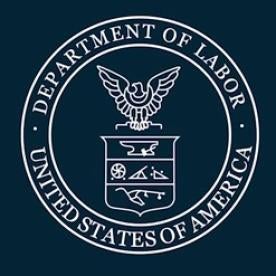Despite recent setbacks, the U.S. Department of Labor (“DOL”) is continuing its efforts to clarify the standard for finding two separate entities to be “joint employers” under the Fair Labor Standards Act (“FLSA”). Under the FLSA, all joint employers can be held jointly liable for any wage-and-hour violations. The DOL’s joint-employment final rule (“Final Rule”) was a welcome development for franchise businesses when it was adopted in January 2020 because it limited the circumstances under which a franchisor and independent franchisees could be deemed joint employers of franchisees’ employees. Unfortunately, a federal district court in New York struck down the Final Rule in September 2020. On November 6, 2020, the DOL appealed the district court’s decision to the Second Circuit Court of Appeals. The DOL is seeking to reinstate the Final Rule. Given the importance of joint-employer standards to franchising, franchisors and franchisees should keep an eye on the DOL’s appeal and on various other federal joint-employment rulemaking.
The DOL’s Joint-Employment Test
The DOL issued its Final Rule on January 12, 2020. Before then, the DOL had not addressed its standard for finding joint employment since the 1950s. In issuing the Final Rule, the DOL recognized that the current landscape of different multi-factor tests for evaluating joint-employment claims under the FLSA has resulted in inconsistent treatment of similar worker situations, uncertainty for businesses and increased compliance and litigation costs. Seeking to promote greater uniformity in court decisions and predictability for organizations and employees, the Final Rule set forth a four-factor balancing test that assesses whether the putative joint employer:
-
Hires or fires the employee;
-
Supervises and controls the employee’s work schedule or conditions of employment to a substantial degree;
-
Determines the employee’s rate and method of payment; and
-
Maintains the employee’s employment records.
The Final Rule clarified that a potential joint employer must actually exercise, directly or indirectly, control over the relevant employee to be jointly liable under the FLSA. Under the Final Rule, whether an employee is “economically dependent” on a potential joint employer is irrelevant. In an especially positive development for franchisors and franchisees, the Final Rule explains that a company’s business model, specifically including franchising, does not make joint-employer status more likely under the FLSA.
New York v. Scalia
Shortly after the Final Rule went into effect, attorneys general from seventeen states and the District of Columbia filed a complaint in the Southern District of New York challenging the new rule. The states argued that the Final Rule’s clarified standard was too narrow, the DOL impermissibly deviated from prior precedent, and in announcing the new rule the DOL failed to account for important costs incurred by states.
In New York v. Scalia, the Southern District of New York agreed with the plaintiffs and struck down the Final Rule. The court found the Final Rule’s balancing test conflicts with the FLSA’s statutory definitions of “employer,” “employee,” and “employ.” The court further found the DOL’s interpretation was impermissibly narrow in conditioning a finding of joint employment on actual control and the Final Rule conflicted with the DOL’s previous interpretations and well-established case law. Lastly, the court agreed the plaintiffs had demonstrated that the Final Rule would increase costs of enforcing their comparable state laws regarding joint employment and would increase costs and resources to train employees on the DOL’s new interpretation of joint employment. For these reasons, the district court found the DOL’s Final Rule was arbitrary and capricious.
On November 6, 2020, the DOL appealed New York v. Scalia to the Second Circuit Court of Appeals. The DOL will ask the Second Circuit to reverse the district court’s decision and reinstate the Final Rule.
Other Federal Joint-Employment Rulemaking
While the DOL’s Final Rule is in serious jeopardy, other federal rulemakings regarding the joint-employment standards under various federal laws are moving forward.
In February 2020, the National Labor Relations Board (“NLRB”) issued a final rule clarifying joint-employer status under the National Labor Relations Act (“NLRA”) (“NLRB Final Rule”). The NLRA governs the relationship between employers and employees by, among other things, protecting workers’ rights to unionize, prohibiting employers from engaging in specified unfair labor practices and imposing obligations on employers to collectively bargain with employee representatives. Like the DOL’s Final Rule, the NLRB Final Rule clarifies the circumstances under which a franchisor could be found to be a joint employer of its franchisees’ employees.
Under the NLRB Final Rule, to be a joint employer under the NLRA, an employer must “share or codetermine the employees’ essential terms and conditions of employment.” To share or codetermine essential terms, the employer must “possess and exercise . . . substantial direct and immediate control” over one or more “essential terms and conditions of employment” of another employer’s employees so that the “entity meaningfully affects matters relating to the employment” of those employees. Under the NLRB Final Rule, the essential terms and conditions of employment are “wages, benefits, hours of work, hiring, discharge, discipline, supervision and direction.” A putative joint employer must exercise direct, immediate and substantial control over at least one listed essential term or condition of employment. Indirect control, contractually reserved rights that are not exercised or control over mandatory subjects of bargaining that are not essential terms and conditions are, without more, insufficient to create a joint-employer relationship.
In addition, in November 2019, the Equal Employment Opportunity Commission (“EEOC”) announced it would issue its own proposed rule clarifying the joint-employer standard for purposes of federal anti-discrimination laws. The EEOC has yet to reveal its proposed rule.
Because of the current state of flux in this area, franchisors and franchisees should keep apprised of ongoing developments in joint-employment law to best evaluate the risks of joint-employment claims in their franchise systems.




 i
i


